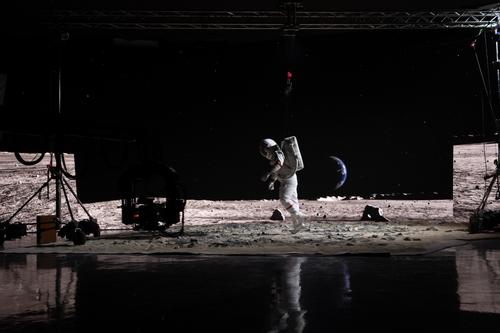NEP and StarTracker
NEP, a global Broadcast Services provider, utilises camera tracking technology from Mo-Sys in order to close the gap between presenters and audience. With more than 15 of our market-leading StarTracker systems, they’re able to offer clients the next level of engaging content for broadcasts, presentations, and productions.
Evolving engagement
Counting over 3,000 employees and offices in 13 different countries, NEP offers end-to-end broadcasting services for a range of sectors. Their most innovative work, however, has been in bringing augmented reality to a wider audience.
Using Mo-Sys’ StarTracker system, NEP have given productions the ability to fully customise sets with AR, integrating graphics, animations, and effects.
Some of the first shows to benefit from this rapidly developing technology have been in the News and Sports area. The Dutch channel, Ziggo Sports, for instance, has used StarTracker-enabled AR in a number of their productions. The ‘Ziggo Sports Arena’, used in their coverage of football matches, is an entirely virtual set comprising elements from football stadiums and changing rooms. Another example can be seen with the channel’s coverage of F1; working alongside NEP and utilising the Zero Density graphics engine, they created a photorealistic pitstop which served as the set for the broadcasts. In both cases, the audience’s experience was further enhanced with the injection of real time statistics, expert analytics, and snippets of footage.
Joining Ziggo Sports in delivering engaging broadcast content is EuroSport. Their coverage of the 2018 Winter Olympics was hosted from a virtual studio created by NEP, and again, provided producers with the ability to integrate dynamic graphic elements into their shows.
Camera Tracking for better broadcasts
Underpinning the AR of NEP’s productions is StarTracker, Mo-Sys’ camera tracking system. Using small, retro-reflective ‘stars’ on the ceilings of studios and upward-facing sensors mounted on cameras, the system allows incredibly accurate tracking data to be captured. In practical terms, this means that the absolute position of cameras can be calculated within virtual environments, allowing them to reliably capture overlaying graphics even when they’re moving.
The ability to move cameras in a virtual set whilst maintaining the integrity of the graphics is highly valued to broadcasters looking to make their productions more engaging. NEP aren’t the only company to experiment with AR and StarTracker to produce viral-worthy programmes – graphic specialists MOOV used Mo-Sys’s technology to help create a life-like mock-up of Wimbledon’s famous clubhouse for post-match interviews (the company has since won a contract to provide graphics for all of the BBC’s live tennis coverage), whilst The Weather Channel has utilised the system to bring their extreme weather reporting to life.
AR for the audience
Augmented reality is helping to create rich, engaging content for broadcast audiences. Already in use across a number of program formats, from game shows to special news events and regular sports production, AR enables producers to create life-like virtual sets that transcend the boundaries of physical studios, and embellish them with eye-grabbing 3D infographics and animations. All of this is made possible with the use of StarTracker, Mo-Sys’s patented camera-tracking system that allows for the free movement of cameras around a computer-generated environment.
Banner image credit: NEP The Netherlands




